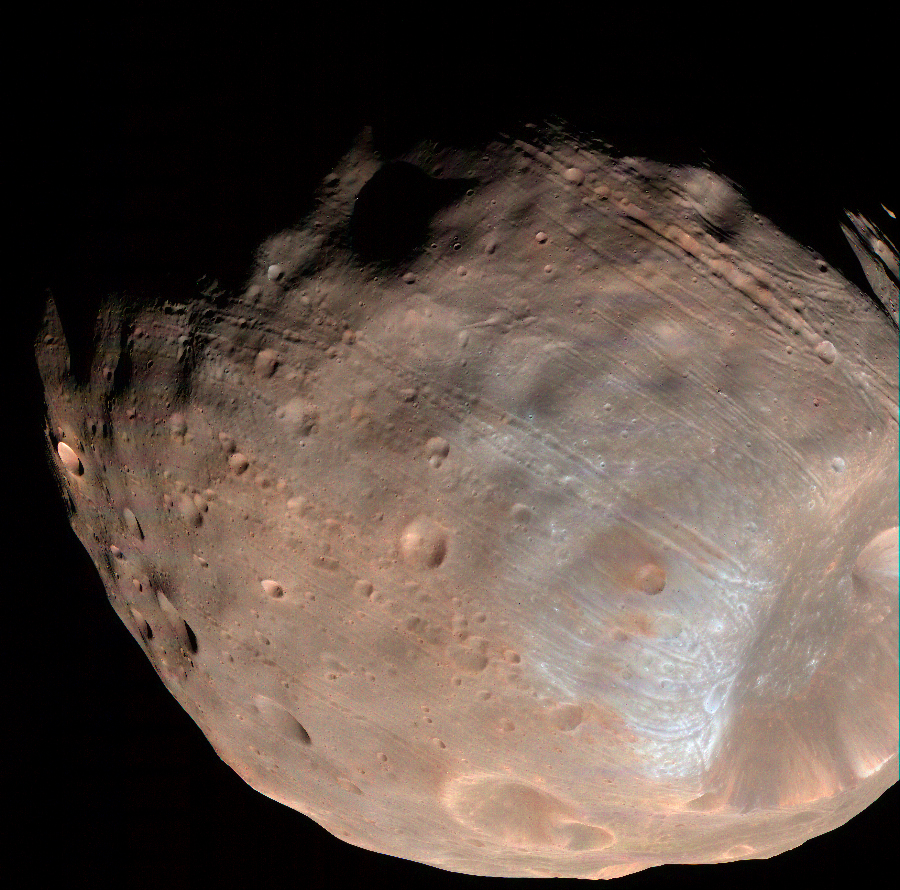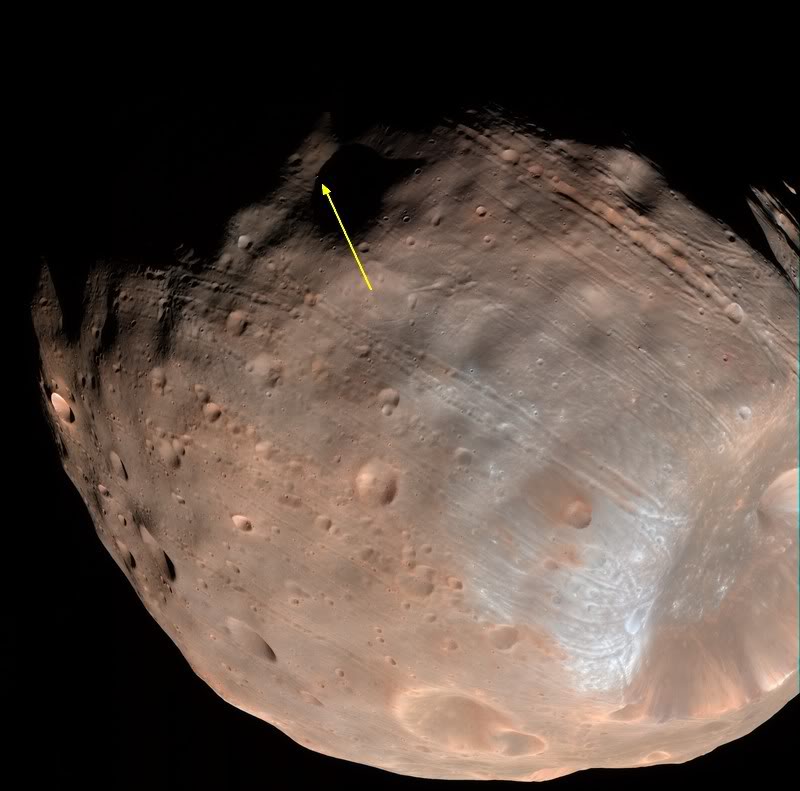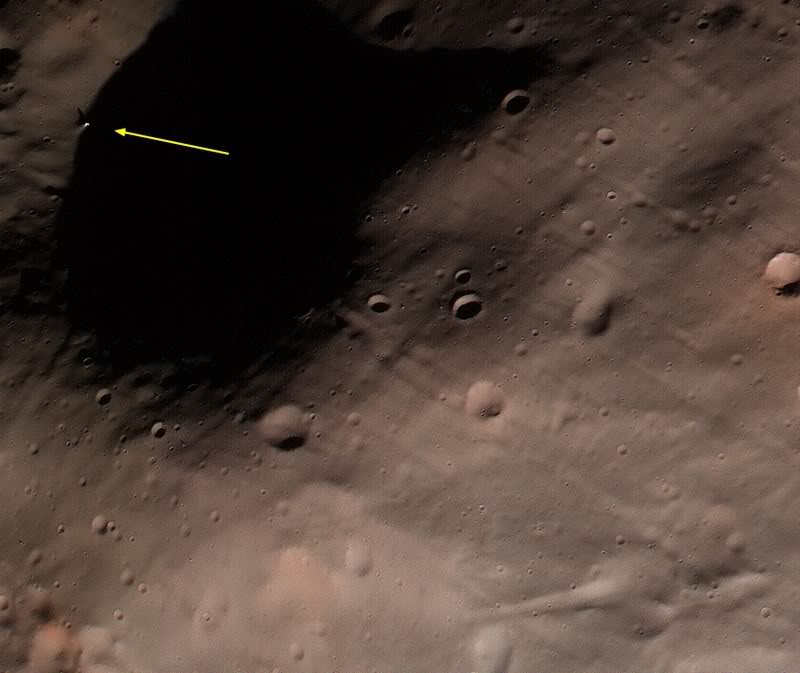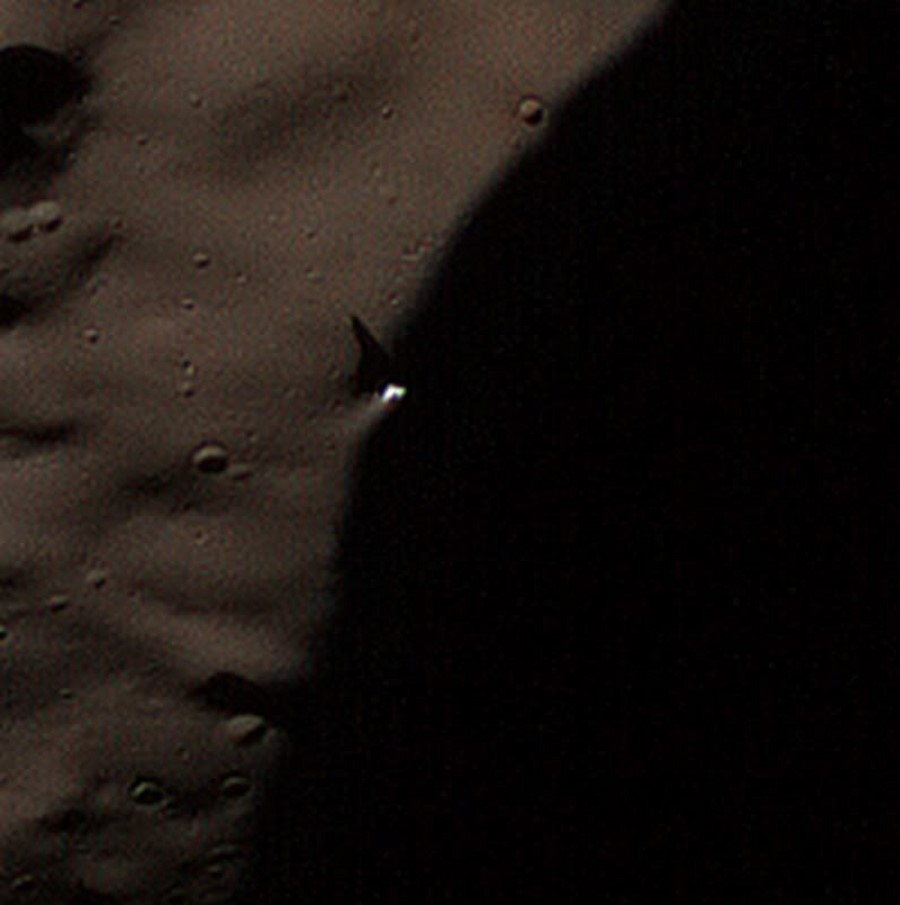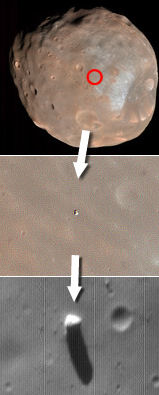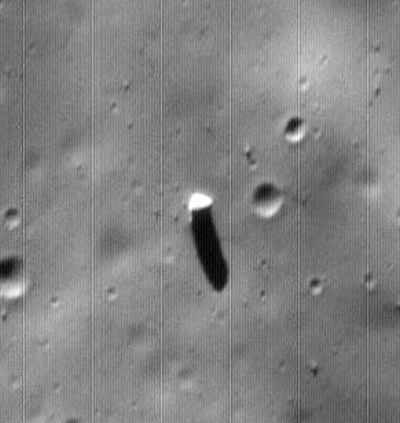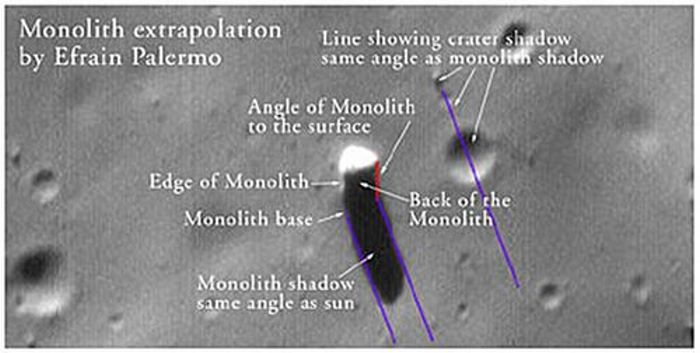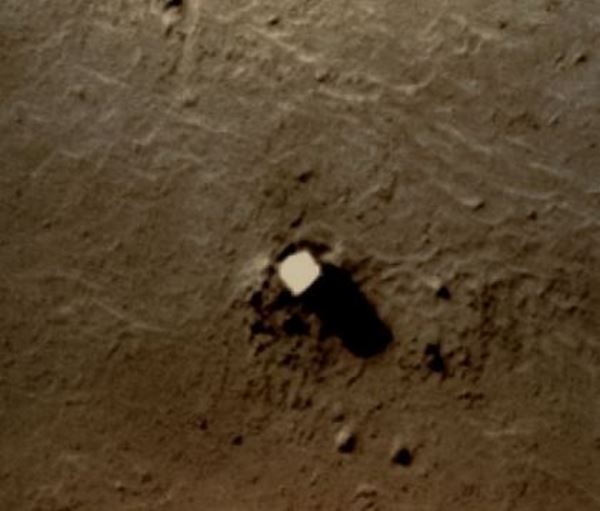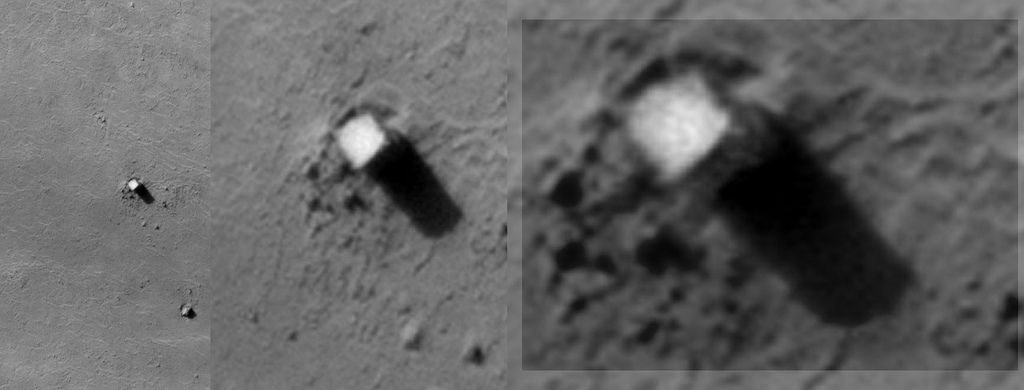|
The Enigmas on Mars 64 |
|||||
|
.... Uploaded on Jul 22, 2009 Former astronaut Buzz Aldrin spoke about the future of space exploration and said the public would be interested in a monolith on Phobos, one of the two small moons that revolve around Mars. |
|||||
|
..
Original Caption Released with Image: The High Resolution Imaging Science Experiment (HiRISE) camera on NASA's Mars Reconnaissance Orbiter took two images of the larger of Mars' two moons, Phobos, within 10 minutes of each other on March 23, 2008. This is the second, taken from a distance of about 5,800 kilometers (about 3,600 miles). It is presented in color by combining data from the camera's blue-green, red, and near-infrared channels. The illuminated part of Phobos seen in the images is about 21 kilometers (13 miles) across. The most prominent feature in the images is the large crater Stickney in the lower right. With a diameter of 9 kilometers (5.6 miles), it is the largest feature on Phobos. The color data accentuate details not apparent in black-and-white images. For example, materials near the rim of Stickney appear bluer than the rest of Phobos. Based on analogy with materials on our own moon, this could mean this surface is fresher, and therefore younger, than other parts of Phobos. A series of troughs and crater chains is obvious on other parts of the moon. Although many appear radial to Stickney in this image, recent studies from the European Space Agency's Mars Express orbiter indicate that they are not related to Stickney. Instead, they may have formed when material ejected from impacts on Mars later collided with Phobos. The lineated textures on the walls of Stickney and other large craters are landslides formed from materials falling into the crater interiors in the weak Phobos gravity (less than one one-thousandth of the gravity on Earth). In the full-resolution version of this image, a pixel encompasses 5.8 meters (19 feet), providing a resolution (smallest visible feature) of about 15 meters (about 50 feet). Previous pictures from NASA's Mars Global Surveyor are of slightly higher resolution, at 4 meters (13 feet) per pixel. However, the HiRISE images have higher signal-to-noise, making the new data some of the best ever for Phobos. This image is in the HiRISE catalog as PSP_007769_9015. NASA's Jet Propulsion Laboratory, a division of the California Institute of Technology in Pasadena, manages the Mars Reconnaissance Orbiter for NASA's Science Mission Directorate, Washington. Lockheed Martin Space Systems, Denver, is the prime contractor for the project and built the spacecraft. The High Resolution Imaging Science Experiment is operated by the University of Arizona, Tucson, and the instrument was built by Ball Aerospace & Technologies Corp., Boulder, Colo. Image Addition Date: 2008-04-09 SOURCE: NASA Photojournal PIA10369 |
|||||
|
Location of the Monolith ..
..
..
|
|||||
|
..
..
You Couldn't
Make This Up Dept.:
"There's a Monolith on Mars' Moon, Phobos"
U.S. astronaut, Buzz Aldrin, the second man to walk on the Moon, alluded to a monolith detected on Mars' moon Phobos. Speaking on a U.S. cable television channel he said: "We should visit the moons of Mars. There's a monolith there - a very unusual structure on this little potato shaped object that goes around Mars once every seven hours. 'When people find out about that they are going to say, "Who put that there? Who put that there?" Well the universe put it there, or if you choose God put it there." - SOURCE: Daily Galaxy
..
When NASA’s Mars Reconnaissance Orbiter (MRO) mapped the tiny Martian moon, Phobos and beamed back photos of the small, potato-shaped satellite, a furor broke out amongst space buffs. There, on the surface in plain view, stood a large rectangular object that unmistakably resembled an artificial monolith - SOURCE |
|||||
|
Not to be outdone, famous science fact/science fiction author Dr. Isaac Asimov penned a tale wherein Phobos was a derelict generation starship that was accidentally captured by Mars' gravity eons ago.
|
|||||
Related Links:
|
|||||
| FAIR USE NOTICE: This page contains copyrighted material the use of which has not been specifically authorized by the copyright owner. Pegasus Research Consortium distributes this material without profit to those who have expressed a prior interest in receiving the included information for research and educational purposes. We believe this constitutes a fair use of any such copyrighted material as provided for in 17 U.S.C § 107. If you wish to use copyrighted material from this site for purposes of your own that go beyond fair use, you must obtain permission from the copyright owner. | |||||
|
|
